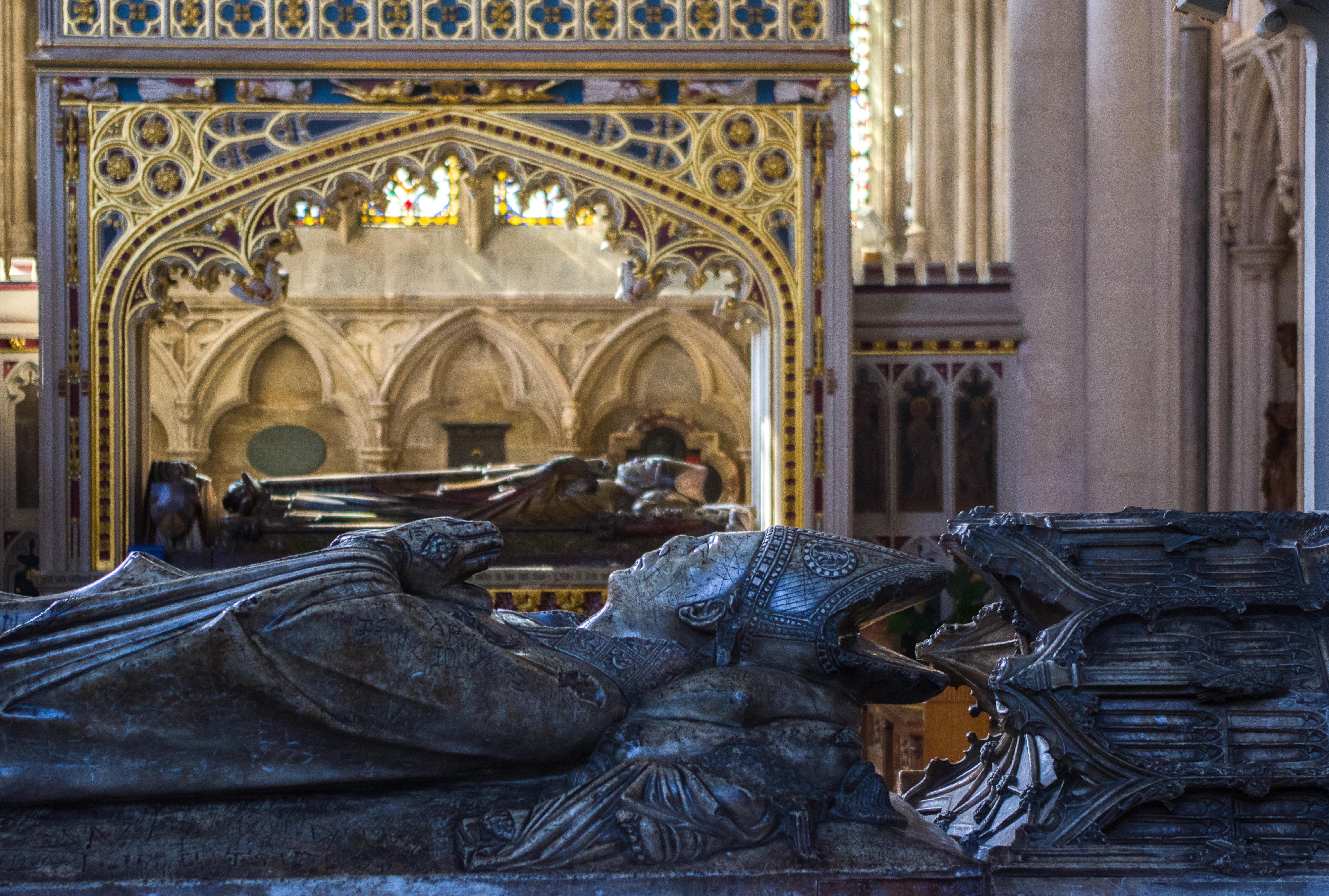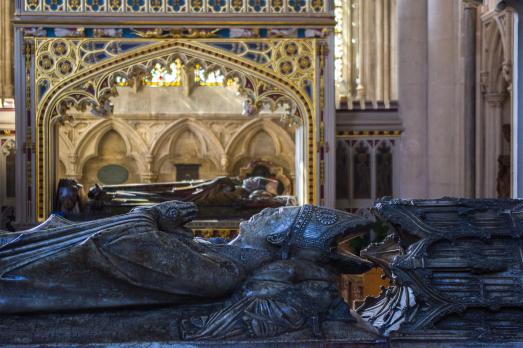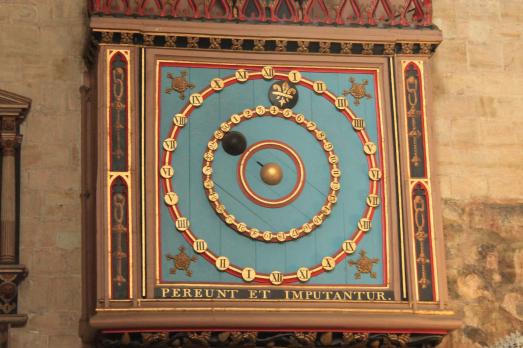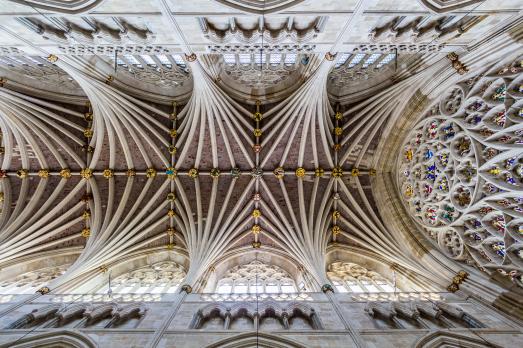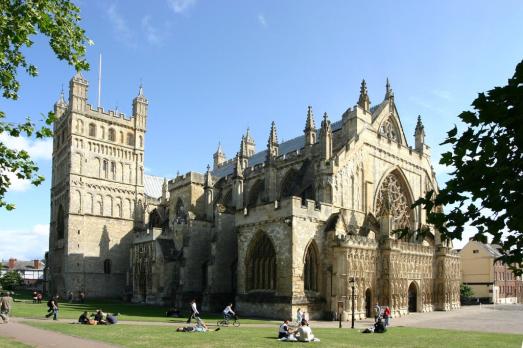Exeter Cathedral stands on a site which has been at the centre of the city since Roman times. The Cathedral was 'founded' by King Edward the Confessor in 1050 AD and the current building dates back to 1114 AD. The west front image screen is one of the great architectural features of medieval England. The addition of the image screen around 1340 marked the completion the rebuilding of the cathedral in the Gothic style. Work continued on the screen with the additional top tier completed about 1470.
Simon Jenkins says 'Exeter's interior is a burst of Decorated glory... (its) roof of incomparable exuberance'.
High up on the north side of the nave is a projecting balcony built in the middle of the 14th century. It is decorated with carved angels playing musical instruments and is known as the Minstrels Gallery. The original purpose of this gallery is not known, but it may have been used by musicians or singers.
The magnificent Bishops Throne is one of the greatest treasures of medieval woodwork in Europe. It was made in the early 14th century using local Devon oak and is 18m (59ft) tall: the cathedral records contain details about the felling of the trees and the preparation of the timber.
Dating from 1484, the large dial of the Exeter Astronomical Clock is a working model of the solar system as it was then understood. The sun and moon circle around the earth at the centre of the dial. The clock is reputed to be the source of the nursery rhyme 'Hickory Dickory Dock' probably inspired by the round hole in the door.

